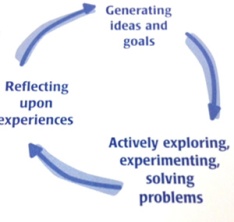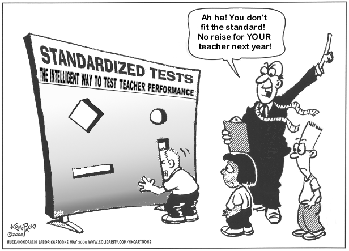January 27, 2020
On January 24, the Minneapolis Public Schools sent an email to parents and community members with the following subject line: Comprehensive District Design Digest: Everything you need to know!
The cheery exclamation point did little to calm fears, however, regarding the district’s comprehensive design proposal (known as the CDD).
For one thing, the email sent to MPS families and staff included a summary of the five options now contained in the district proposal, but there was no link provided to the actual document so that people could read through it themselves.
A parent requested the link on Facebook from a district employee, and it was then provided, but this does not seem like an effective way to build trust in MPS’s potentially massively disruptive plans.
Incomplete Information
The proposal, thus far, is outlined in a PowerPoint document that will be discussed at the school board’s January 28 Committee of the Whole meeting and at the district-sponsored listening sessions that will be held over the next several weeks.
This approach–selectively releasing explosive information just days before public engagement sessions are slated to begin–seems designed to further stoke panic, division, and discord between parents and various school communities, with little sense of how to actually bring people together for the common good.
And the plan itself is laced with incomplete or inaccurate information, which is also sowing mistrust and fear in some corners of the district.
MPS Seems Bent on Slandering K-8 Schools
The CDD proposal released on January 24 continues an attempt to prove that K-8 schools are somehow worse for students than standalone middle schools. In so doing, the proposal offers a shoddy side-by-side comparison of unnamed (but easily identified) district schools.
Slides 45-46 seem to pit Barton Open K-8 against Justice Page Middle School. Barton is listed as “School A: K-8” and Page is “School B: 6-8.” A list of what each school ostensibly offers, in terms of enrichment and support, then follows.
But the list under School A: K-8 (Barton) is selectively narrow and purposefully incomplete, in order to drive home MPS’s pitch that K-8s are inadequate. This is slide 46:

Barton does offer team sports (though fewer in recent years, thanks to district-level budget cuts), though, and health in grades 5-8, not just in 7 and 8. Phy Ed also happens for every kid, K-8, and not just in 8th grade.
Barton offers art, too, and many other specialized elective course offerings, including Film Studies and a semester-long deep dive into the Holocaust and its connections to current events.
The dance class Barton offers as an elective is built around students as creators, since the class culminates in a show of dances choreographed by students. In recent years, there have been powerful works done that reflect students’ interest in Black Lives Matter and gun violence, for example.
The school also has a robust after-school debate league, and has recently fielded English, Spanish and Somali-speaking teams.
Good School vs. Bad School = A Problematic Framing
Barton does not have AVID (a separate programming model built around providing more support and smaller class sizes for students in need) but it does offer in-school classes for students who need homework help and so on–all on an absolutely bare bones budget, of course.
It may also offer something else, thanks to its smaller size: an opportunity for closer connection among teachers, staff, and students. This connection might foster stronger relationships, which is also a form of essential support. (Nicole Naftziger, MPS parent at a community K-8, has done a thorough job of debunking claims–often using MPS’s own data–that 6-8 schools are better for all students.)
But the CDD proposal seems designed to tell a purposefully inaccurate story.
Electives Are Not Offered to All
Justice Page is “School B” in the above slide, and it does appear to boast an impressive number of elective classes. But upon closer inspection, these course offerings are most available to the students who are already successful–as least as far as standardized test scores go.
That’s because the course offerings sheet available on the Justice Page website, which guides students through the enrichment classes available to them, includes the following caveats:

ELL students, in other words, are presumably isolated from the rest of their peers and not allowed to participate in enrichment courses with native or proficient English speakers.
And kids who perhaps don’t test well or who are somehow below grade-level in math or reading (the two most tested subjects) will also miss out on at least one enrichment class, and be shuttled into a remedial class–even though there is good pedagogical support for not doing this.
Should MPS Understand Its Own Schools Better?
While I don’t presume to know all of the reasons Page has structured their course offerings this way (it may be what the staff feels is most helpful for students), it certainly challenges the narrative that all kids will receive a “well-rounded education,” as MPS claims, at large, standalone middle schools.
My critique here, however, is not directed at Page, nor should this be read as a simplistic defense of Barton. My own kids have gone to Barton but my youngest will go to Page if K-8s are eliminated in MPS, and I deeply believe there are no “perfect” schools, including Barton.
Every school is a complex mix of success stories and sometimes deep-seated obstacles. Barton is no different, although it does–like Justice Page–benefit from the kind of stability and community support that should be cultivated at all MPS sites.
Rather, I am using an example concerning two schools that are in my neighborhood to poke holes in the incomplete and factually inaccurate marketing plan/proposal MPS released on January 24.
Beware the Red Herring
If we are to accept the idea that large-scale disruptions are urgently needed–now–in order to save money and better serve MPS’s most marginalized communities, then we need factual information that can be vetted and verified.
We can’t build a better MPS on half-truths and skimpy marketing plans.
Communities in north, northeast and the south/central neighborhoods have experienced the most disruption and upheaval in recent history. North High School was recommended for closure by district officials in 2010; it is still in the process of trying to rebuild its community.
Some people also maintain that the Central neighborhood has never gotten over the closure of its high school in the 1980s. From a website run by Augsburg College historians:
Central High School was the heart of the Southside African-American community for most of the twentieth century. Despite protests, the Minneapolis Public Schools decided to close the building in 1982. It was demolished soon thereafter (except for the gymnasium, which remains). The school was also critical in the life of Prince Rogers Nelson, who attended high school here from 1972-1976.
The essential question, then, is what MPS can do collectively to support schools across the city, especially since closures are almost certain to follow–even though the January 24 CDD proposal states such decisions will be made after the board votes on a plan.
Community-Led Change
Disruption and the creeping Charlie-like spread of neoliberal, market-based education reform ideas are exactly what has been done, repeatedly, in Minneapolis and other large districts. (Just take a look at the proliferation of charter schools in north and northeast Minneapolis, in particular.)

What hasn’t been tried–as a school board member acknowledged recently–is a grassroots, community-led approach to strengthening existing schools within MPS. This is a strategy supported by many racial and education justice activists, including Jitu Brown of Journey for Justice and the leaders of the Schott Foundation based in Boston.
Will it really work to push through school closures, dramatic boundary changes (some of which I think hold promise, including the move to send Kenwood area kids to Anwatin and North High), teacher and staff upheavals, and so on? Where will this put the district in five years?
And, amid MPS’s faulty claims that standalone middle schools are somehow better for students, the Minneapolis City Planning Commission appears to have given the green light to yet another K-8 charter school in northeast Minneapolis, Metro Tech Academy.
“We don’t have failing schools—as a public we’ve been failed.”















